Paris, June 5th – As inflation rates rise across the world, living conditions of the most at-risk communities continue to deteriorate along with growing food insecurity. The combined effects of climate change, conflicts, and economic shocks have exacerbated the crisis, leaving millions of people extremely vulnerable.
Moumouni Kinda, ALIMA Chief Executive Officer: “As inflation in Europe and Africa creates alarming economic instability, food insecurity threatens the lives of millions of people on the African continent. It is imperative that we reinforce international humanitarian aid for fragile populations in order to stop this increase of hunger.”
Food shortage worsening across the world, particularly in high-risk regions of Africa
After decades of progress in development, poverty and food insecurity are both on the rise worldwide. The inflation on food products remains high across the world, with several countries experiencing two-figure inflation rates. The Information Network on Food Security’s annual report indicates that the number of people facing severe food insecurity, at the crisis level or worse, was 258 million people in 58 countries and territories in 2022 – versus 193 million people in 53 countries and territories in 2021. This is the highest figure since the creation of the report seven years ago.
On the African continent, economic shocks, conflicts, and climate change are jeopardizing the resilience of countries and populations as well as their capacity to respond to food-related shocks. With a large proportion of the population already dependent on agriculture for their livelihood, soaring prices of basic commodities are jeopardizing the food security of already fragile communities. Malnutrition is on the rise, leading to an increase in the number of children experiencing delayed growth and other malnutrition-related illnesses, and lower economic productivity. Women and children are particularly affected and are exposed to higher risks of diseases and mortality.
OptiMA: ALIMA’s solution to fight acute malnutrition
Humanitarian organizations play a key role in mitigating the effects of this food and nutrition crisis. To that end, medical NGO ALIMA (The Alliance for International Medical Action) has deployed an innovative solution aimed at providing more efficient care for children suffering from acute malnutrition.
The OptiMA (Optimizing the Management of Acute Malnutrition) program offers a diagnostic tool – the MUAC bracelet – to families so that they can detect acute malnutrition in their children at an early stage. The bracelet, which measures the mid-upper arm circumference of a child using a simple color code, is very easy to use. When treated early for malnutrition, children have better chances of survival. In addition, OptiMA provides a single nutritional treatment program for every child suffering from acute malnutrition either in its moderate or severe form. The dosage of this ready-to-use therapeutic food made from peanuts, milk powder, soja flour, and fat, is reduced as the child’s condition improves. This is contrary to current recommendations of the standard protocol.
In 2022, the OptiMA approach helped ALIMA significantly improve the percentage of children treated in the Ngouri district in Chad, increasing from 16.9% to 35.1%. Additionally, the number of children requiring hospitalization for severe acute malnutrition has reduced from 30% to less than 20%. These encouraging figures demonstrate the effectiveness of such an approach integrating families in the detection of malnutrition.
Young Bintou’s story of hunger in the Sahel
Bintou is a two-year-old girl living with her family in Bamako, Mali. Her mother, worried about her daughter’s extremely weakened state, took her to the community health center where she was rapidly cared for by ALIMA. Diagnosed with severe acute malnutrition, Bintou was immediately transferred to the nearest hospital to receive care. As a result of this care, she was able to return home to her family less than a week later. During her time in the hospital with her daughter, Bintou’s mother was taught to detect the signs of acute malnutrition at an early stage, like the millions of mothers in Sub-saharan Africa taught by ALIMA.
Bintou’s story illustrates why communities should be involved in addressing chronic illnesses such as acute malnutrition to reduce the delays in seeking care, and as a consequence, the number of deaths. In 2022, ALIMA and its local partners provided care for hundreds of thousands of children suffering from acute malnutrition, including 27,825 severely affected children like Bintou. The NGO continues to work on reinforcing national health systems and improving the resilience of local communities.
To enable the implementation of programs like OptiMA, ALIMA counts on its local and financial partners. For example, with a 150$ donation, a child suffering from severe acute malnutrition in a critical situation, like Bintou, can be hospitalized. With a monthly 6$ donation, therapeutic food treatment can be provided for three months. Today, ALIMA once again calls for donations and international solidarity for its new fundraising campaign, “Prices are rising, and so is hunger,” to continue saving lives.
Photo : ©WTYSL / ALIMA






